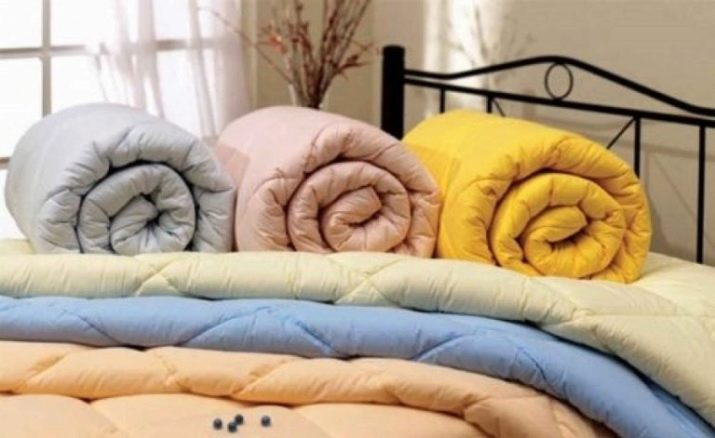Quilts from padding polyester
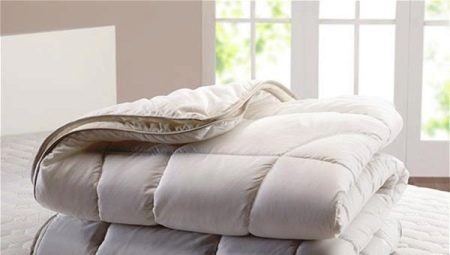
One of the most popular fillers for blankets can rightfully be called a synthetic winterizer. It has a number of advantages due to which synthetic winterizer products are in demand. Bulk and lightness, wide selection and affordable price of products, as well as ease of care and durability have firmly secured its leading position.
Below we will talk about the pros and cons of synthetic winter blankets, and we will also help you choose a product that will delight you for many years.
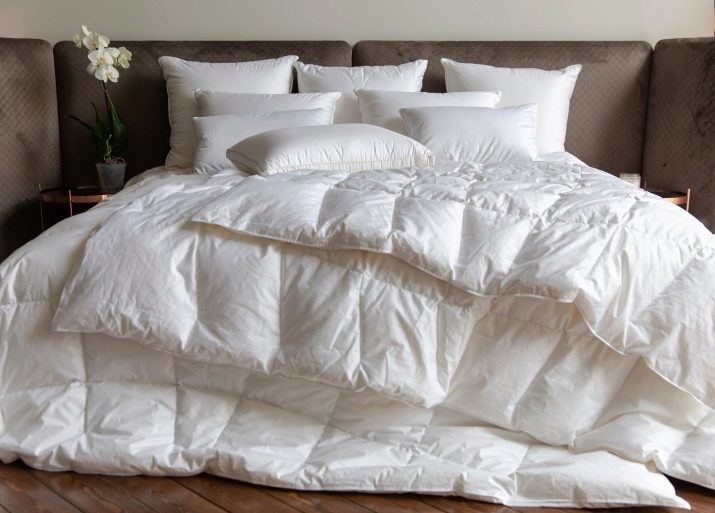
Pros and cons of filler
Sintepon is one of the most affordable and common fillers for blankets and pillows, as well as for many soft products. Having a large bulk with light weight, the synthetic winterizer has deservedly taken its place in the market, and the budget and easy maintenance have further strengthened these positions.
Below we will get acquainted with the properties that this type of filler has, what its pros and cons, and how to prevent rapid wear and tear of things through proper care.
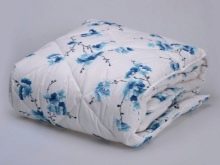

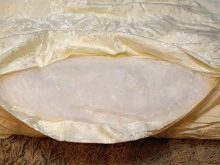
The pluses include the following points:
- sleeping under a synthetic winterizer product is comfortable, it retains its airiness and lightness;
- a high-quality blanket will retain its shape and properties after a large number of washes;
- synthetic winterizer is a hypoallergenic filler;
- with a wide selection, you can find a model for every budget.
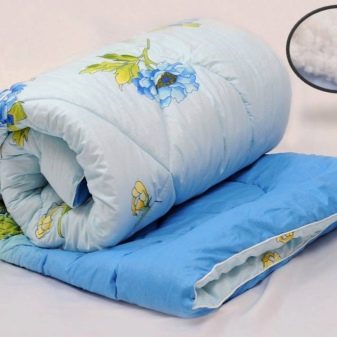
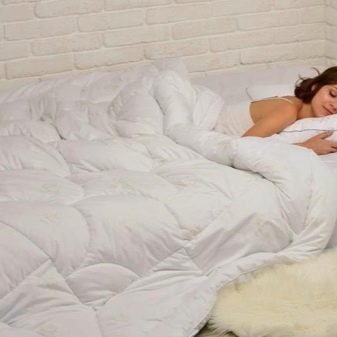
The disadvantages include:
- when purchasing and further use, it is necessary to monitor the correct stitching, since the blanket can crumple due to weakness or irregularity of the seams;
- it is a fully synthetic material.
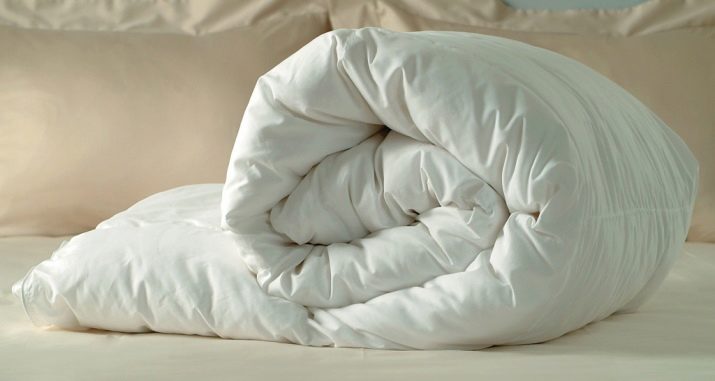
Blanket overview
The first parameter, which is decisive in most cases, is the size. The most common situation is when, after purchasing a blanket, you find that it does not match your existing bedding.To avoid such situations, before going to the store, you must clearly determine the size.
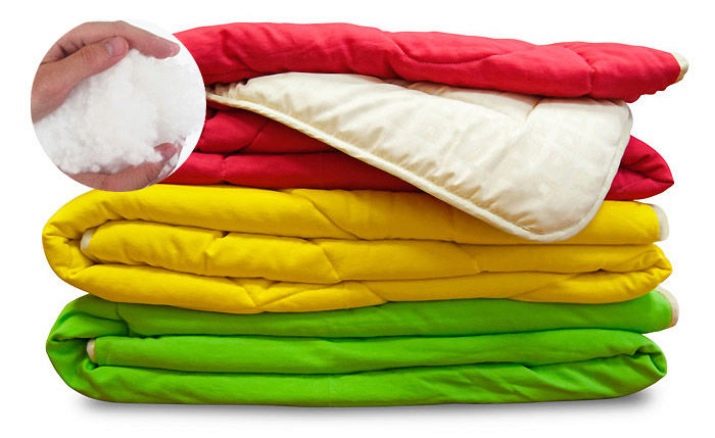
There are standardized blanket sizes:
- single beds: width - 130 cm, length -190 cm;
- one and a half: width - 140 cm, length - 205 cm.
- European standard: width - 155 cm, length - 205 cm.
- double: width - 172 cm, length - 205 cm.
- royal: width - 220 cm, length - 240 cm.
- baby: width - 140 cm, length –140 cm.
Now a large number of manufacturers have their own unique proposals, you can also make a product according to individual sizes and criteria, so there is no strict reference to sizes now.
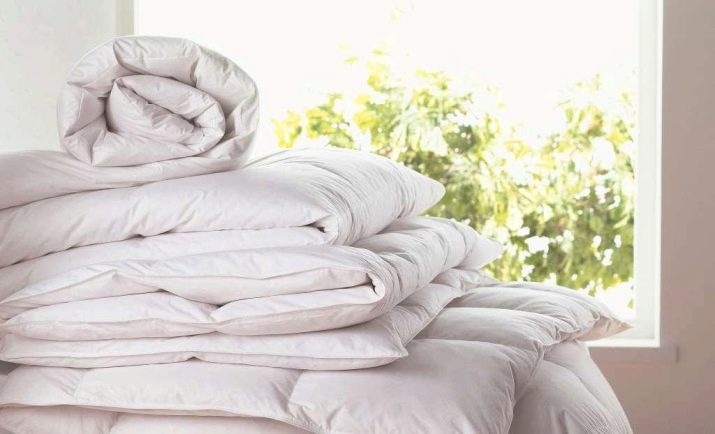
One-bed
The size for a single blanket is dictated by the fact that it is designed for one person with a weight of about 90 kilograms. But in our time, even the definition itself is rarely found, since in guests these dimensions and proportions are close to the dimensions of one and a half.
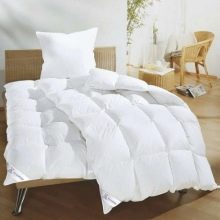
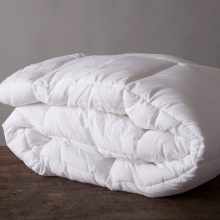
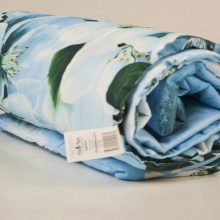
These blankets come in the following sizes:
- 130 by 180 cm;
- 130 by 190 cm;
- 140 by 190 cm;
- 140 by 200 cm.
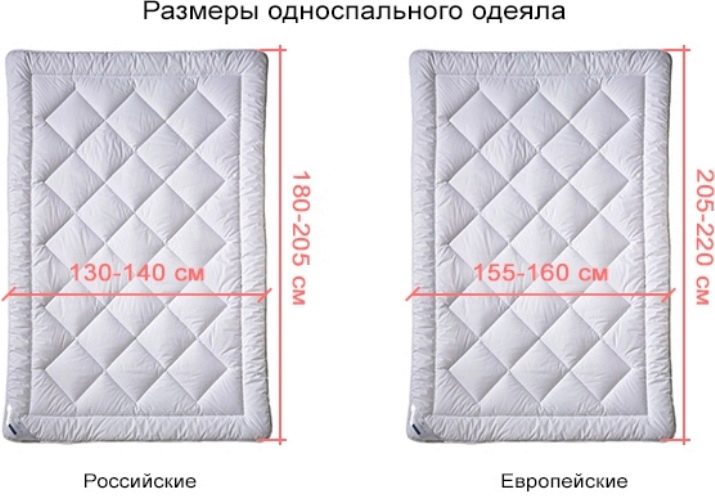
One and a half
You can often hear that a one-and-a-half blanket is called a family blanket, since two people can easily hide behind it. Also on sale are sets of several blankets, allowing you to hide separately.
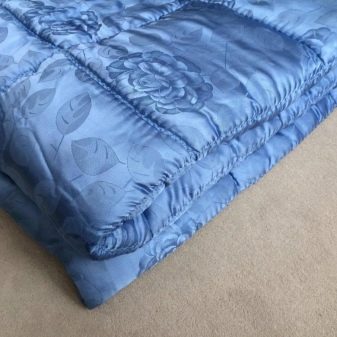

These duvets are available in the following sizes:
- 155 by 215 cm;
- 160 by 220 cm;
- 165 by 200 cm.
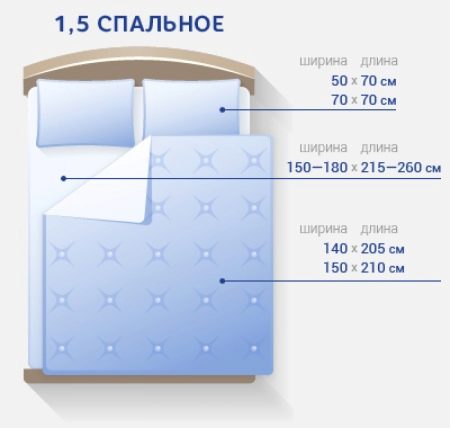
Double
In most cases double blankets have basic models with the following sizes:
- 200 by 220 cm;
- 195 by 215 cm;
- 175 by 205 cm.

The size range of double blankets is very large, there are about ten of the most common options. So there shouldn't be any problems with finding the exact size for the bed or bedding.
In addition, blankets can have a variety of shades, patterns and patterns, made from different fabrics as a cover. This allows you to choose a product for any interior.

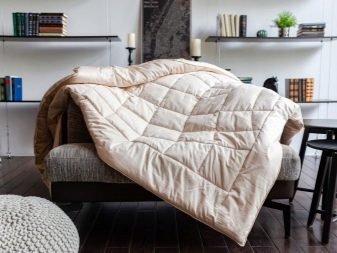
How to choose?
A synthetic winterizer blanket can rightfully be considered budgetary and practical, and also because of its low weight, only positive emotions remain from sleep under such a blanket.
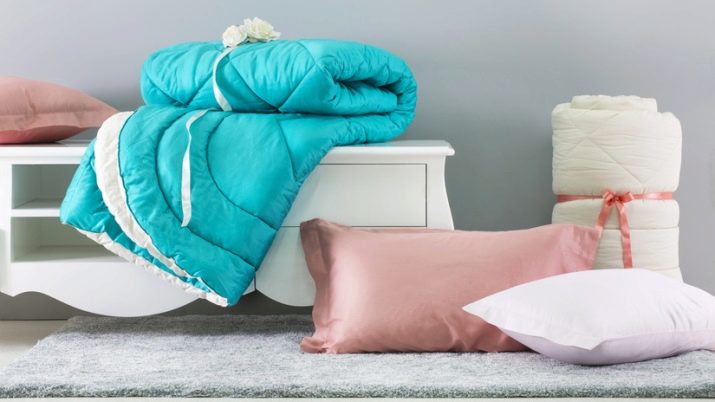
When choosing a blanket, it is worth paying attention to some factors in order to get only pleasure from using it in the future.
- The most important such factor is tailoring, the way in which the thing is stitched. A reliable option is when the stitches are made in the form of squares, and not longitudinal stripes. In the case when the blanket is only stitched lengthwise, you will soon get lumps and discomfort from use.
- There are both winter and summer options.... Winter ones warm well and keep warm, and for those who like to hide in summer, lighter products are suitable.
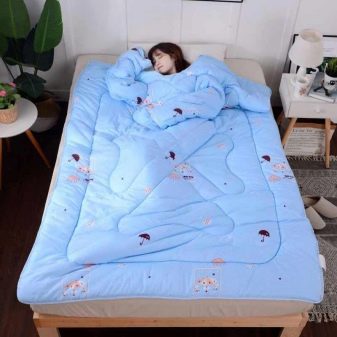
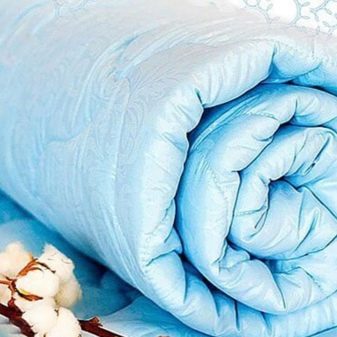
How to wash?
In order for your blanket to serve you for a long time and bring only comfort, you should seriously approach the issue of caring for it, and in particular washing.
A synthetic winterizer product can be washed by hand or in a machine, but taking all precautions.
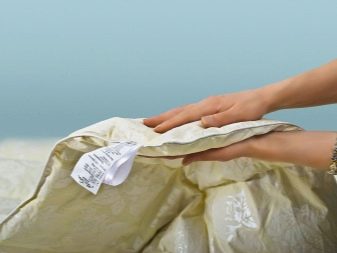
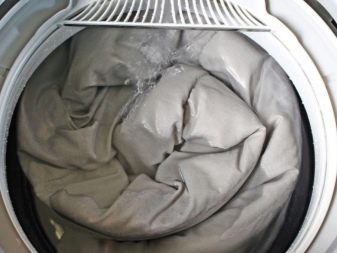
Nowadays, some automatic machines have modes for washing blankets, pillows and bed linen. Before you start washing, you need to read the instructions for your washing machine, because even the same washing modes may differ on washing machines from different manufacturers. You can also look at the recommendations that are present on the tags of the products themselves, and after that start the washing process.
- Follow the standard procedures for preparing your washing machine before washing. Remove and rinse the powder tray out of any residues.
- Depending on which detergent you choose - powder, gel or capsules - read the instructions and dosage in case of washing the blanket.
- Gently and effortlessly roll up the blanket and put it in the drum washing machine.
- Close the door, make sure that it does not pinch the blanket... If your machine does not have a blanket wash cycle, the bulky, delicate or regular hand wash will be fine for you.
- The basic requirements for the washing mode are low revolutions and water temperature not exceeding 40 degrees.
- Also it is necessary to turn off spinning and drying, and if the washing machine has a double rinse function, it must be turned on. If this function is not available, you can simply rinse one more time after the end of the main wash cycle.
- When the wash program is completely finished, you must leave the item in the drum. the washing machine for about one hour, so that the glass is filled with water.
- After get the product and hang until completely dry.
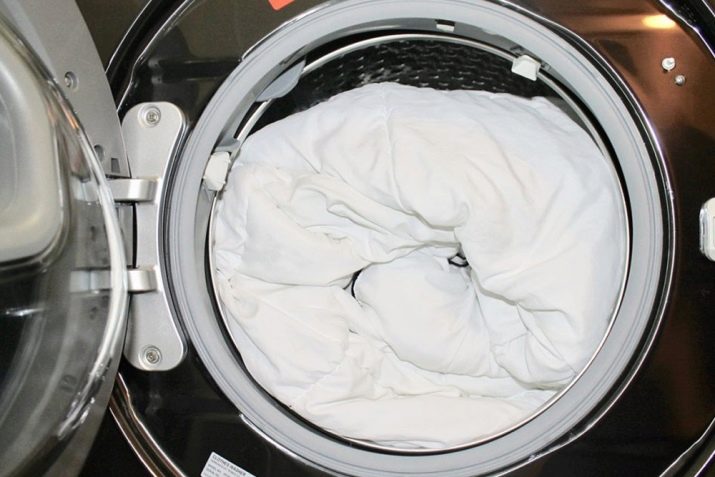
Hand wash is sometimes used. For example, there are situations when you need to wash a small area of the blanket because of a little dirt, or the blanket is so delicate that it cannot be washed in the washing machine. Even a simple situation, when too large a blanket does not fit into the drum of the washing machine, leaves no choice.
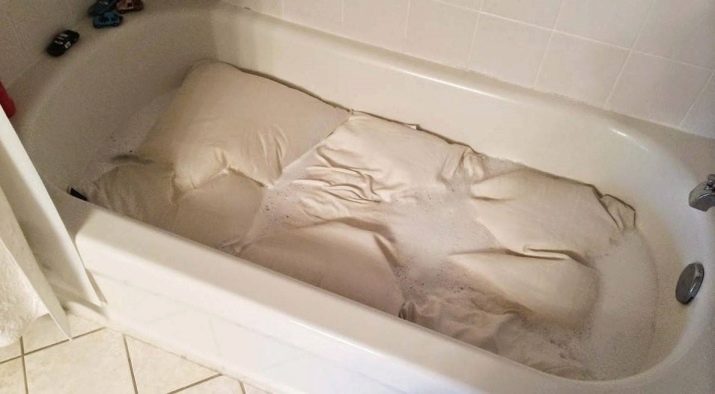
Let's figure out how to properly wash by hand.
- Fill the container in which you are going to wash with water from 30 to 40 degrees... Most often they wash in bathtubs, so it is necessary to take into account the characteristics of the materials from which they are made and how they keep heat.
- There are many detergents that are designed specifically for hand washing blankets, dilute this or a similar product in this water until completely dissolved.
- Fold up the blanket and dip in water, gradually submerging all its parts.
- To facilitate the washing process, can be washed by going from square to square if the blanket is stitched in a cassette, or visually it is not divided into sectors. You can use brushes with delicate bristles for washing, and during washing, the blanket must be carefully turned over, but not crumpled or wrinkled.
- Drain water after washing... Dial again without removing the blanket, rinse it carefully and drain the water. You can repeat this procedure several times.
- After that it is necessary wring out the blanket... During the washing process, the blanket collects a lot of water, squeeze as much as possible, but do not overdo it so as not to damage.
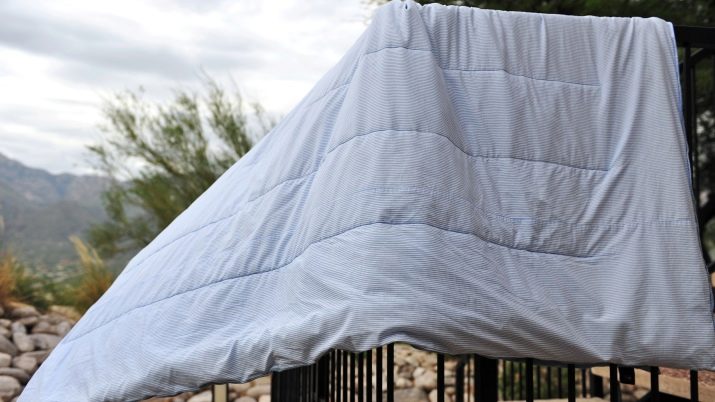
Products made of padding polyester are a modern approach, since the quality and versatility of the filler allows air to pass through well, as well as to evaporate moisture, thereby adjusting the temperature individually for each person. And the benefits of these bedding sets will leave no one indifferent.
